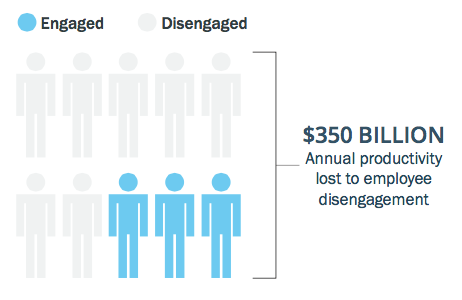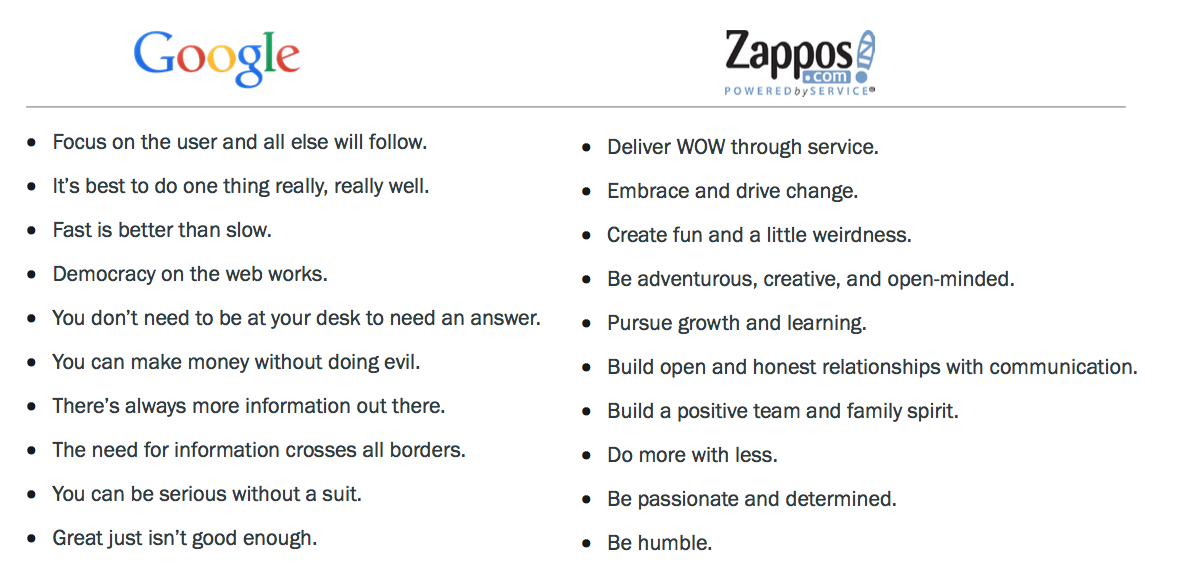Onboarding a new employee doesn’t just last for the new hires first few weeks. There’s more to employee motivation than encouraging a worker to come to work on a regular basis and complete their assigned projects on time. It’s about creating conditions that will help the employee do their best work; finding new ways to increase that person’s productivity; improving the quality of their work; and encouraging behavior that contributes to the success of everyone on the team.
Better still, the facts demonstrate that when employees are truly feeling motivated, the company directly benefits where it matters most: the bottom line. According to a seven-year study of 841 leading corporations, and 3,490 of their employees, when employee motivation improves, the company’s stock delivers higher returns the following year – a finding that holds true regardless of whether economic conditions are good or bad. The opposite has also been found to be true: A more recent Gallup survey estimated that the U.S. economy is losing $350 billion annually in lost productivity because 70% of American employees are not engaged in their jobs.
While no single team-building exercise or motivational activity can be counted upon to inspire dramatically improved performance, managers who use the following incentives can certainly create an environment where motivation thrives – for both the new hire as well as tenured employees.
Give Them Something to Believe In
While many motivators are job-specific, it’s essential that the worker also have something bigger to believe in. A mission statement could suffice, but often a vision statement from the CEO is more directional and less platitudinous. For example, Google uses a list of “Ten Things We Know to be True” to inspire its employees, while online shoe retailer Zappos uses a similarly unorthodox yet inspirational list that it refers to as its “10 Core Values”:
Empower the New Hire
Another motivator for most employees is the manager-sanctioned freedom to take the lead and try out some ideas on their own. To try and develop a new, more efficient process, for example … or, to simply make more decisions instead of always taking directions … in other words, to act more like a company principal, or even the owner. Of course, new employees need to spend at least a few months in a position before being allowed to take on such responsibility. But more experienced team members should be encouraged to take charge and have ownership of the outcomes.
Hold them accountable and demand regular feedback. But understand that mistakes will occur. In today’s dynamic workplaces, ordering employees around like a drill sergeant is counterproductive – while providing these subject experts with more power and autonomy can often deliver far better outcomes.
Incorporate Assignment Variation
It should come as no surprise that employees who are assigned interesting projects typically report that they are more engaged and motivated. Unfortunately, not every IT manager has enough of those kind of projects to go around – which is why many managers alternate responsibilities and roles on a rotating basis, allowing employees to spend a cross- section of time in various types of project work.
Establish Long-term Goals
It’s not just new employees who want to know that there’s a long-term plan for them at the company. Existing employees are also motivated by the promise of job security this kind of thinking promotes. This is especially important in the world of IT, where the constant whirl of programs, processes and technologies drive even the most experienced of employees to distraction with feelings that their time is limited.
Sit down with each employee in your department and have a conversation about what the person wants from their job and career, and how they envision both developing in the next two to five years. Then use that information to help the employee establish the necessary goals. Show them the path, and fill in the details about how they can traverse it. If advancement requires a degree, tell them about tuition assistance or scholarships the company may offer. A clear path of progression is a very powerful motivator.
Leverage the New Gaming Applications
In an attempt to relieve managers of those additional responsibilities (and to make programs more metric-based), some companies have turned to digital gaming. Typically, these programs allow employees to earn points or badges for completing jobs or meeting deadlines. To leverage the element of competition, a leaderboard can be used, which lets participants compare their performance to their peers.
- Employees at global consulting firm Deloitte earn virtual badges after completing training courses and “unlock” more complex courses when completed.
- SAP uses games to assign sales leads, as well as to encourage model-employee actions, like carpooling.
- IBM has incorporated a number of digital games into its training and motivation programs.
According to Wired magazine, these games “stimulate the same universal motivators that keep people playing video games: the desire to have control, to improve, to make a difference, to progress and achieve, and to connect with others. As it happens, tapping into these drivers is essential not only to creating successful video game experiences, but successful workplace cultures as well.” However, experts warn that there are potential downsides: You need to ensure the game is teaching desired behaviors, not just doling out meaningless rewards; response to the game needs to be monitored to ensure it isn’t creating animosity; and, of managers still need to manage employee performance.
Just Ask
No matter how creative and well-considered you think your motivation program is, it’s what your team thinks that matters most. That’s why it’s important to survey them – especially new employees – about their personal preferences. The best method is also the simplest: Just ask, “What motivates you to do your best work,” then actively listen.
Assign a Mentor
Not everyone is going to be motivated by your management style. Instead of letting that frustrate you, accept it and match the person with a mentor… a superior or peer who can make a better connection with the employee, model your desired behavior, and inspire the person to be their best. A mentoring circle (a collection of people the employee can call on for advice and inspiration) provides multiple points
of support, and helps ensure someone is always available to work with the person. The circle can bridge business units as well as geographies.
Praise and Recognize Hard Work
Studies consistently show that one of the best ways to motivate an employee is also one of the simplest and least expensive: take the time to personally recognize and praise the employee when they accomplish good things. No celebratory outing is necessary. Just let
the person know that you’re aware of their positive performance and you appreciate it very much. A face- to-face conversation works best for this. A handwritten note is an added bonus.
Keep Your Concerns to Yourself
As a manager, one of your jobs is to model good behavior. When you’re motivated and working hard, those you manage see that they need to do likewise. Unfortunately, it works the same when you’re unmotivated or distracted. That’s why it’s so important that you keep personal feelings, concerns and distractions private. The less your team knows about those things, the less they’ll be impacted by them.
Effective new employee onboarding is critical, to be sure, but the key to employee retention extends far beyond the first few weeks and months. In our next chapter, we’ll dive into the heart of employee retention, and provide information to help ensure that your top performers are positioned to contribute to your organization long term.






